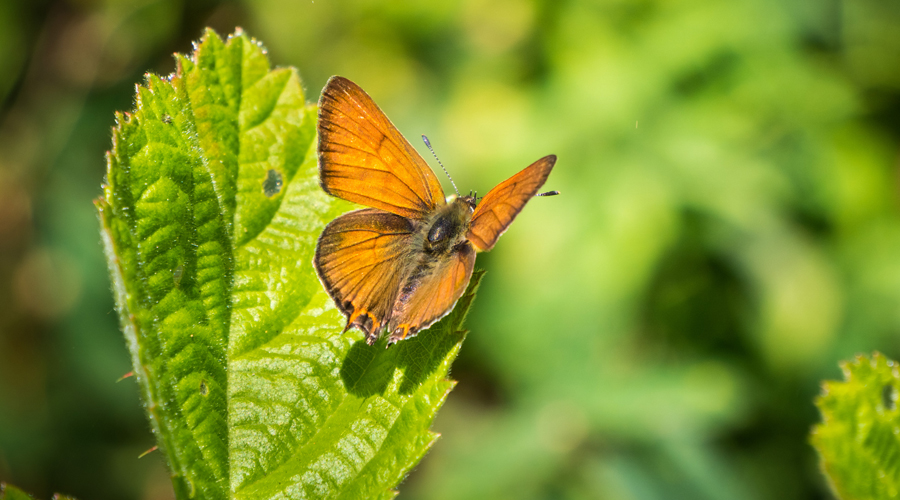Spring has sprung and nature’s prettiest pollinators — such as the Colorado hairstreak, star of the Postal Service’s latest butterfly stamp — are waiting in the wings. Here are six facts about these fragile forces of nature:
1. Butterflies have four wings, not two. They’re also cold-blooded and need temperatures higher than 60 degrees to fly; when you see a butterfly with its wings open basking in the sun, it’s fueling up. Most butterflies in the adult stage live only a few weeks, but some have been recorded living up to 18 months. A butterfly’s wings are transparent; any color comes from its scales. There are roughly 20,000 butterfly species worldwide.
2. They can be macro … The Queen Alexandra’s birdwing, which is only found in certain parts of Papua New Guinea, has a wingspan of up to 11 inches. It was “discovered” by naturalist Albert Stewart Meek, who detailed the finding in a 1913 book. Many of the specimens he brought back were marred by large holes. The indigenous people wisely used nets of spider webs and sticks to catch these megamarvels, but Meek used a gun (albeit one with special ammo to limit damage).
3. … And micro. The Western pygmy blue, native to North America, is believed to be the smallest butterfly in the world. It populates Western states and is very small, with a wingspan of about a half an inch, but it is not particularly blue. In fact, coppers and browns are dominant, especially in females, with a hint of muted blue at the wing base. The pygmy blue is found in a variety of environments but prefers saltbush and deserts, where its earthy coloration fits right in.
4. Some are rare … No one knows for sure, but the Palos Verdes blue is considered by many to be the rarest in the world. It was considered extinct until 1994, when a small colony was found in San Pedro, CA. Unlike its cousin the Western pygmy blue, it is, in fact, blue — a dusty-yet-dazzling azure. Last year, the Blue Butterfly Project released captively raised specimens in secret locations along the Palos Verdes Peninsula, the butterfly’s native habitat, to boost the population.
5. … And not-so-rare. Pity the poor cabbage white. Even its name sounds common. Its coloring is so unremarkable that they are sometimes mistaken for moths. It is the most common butterfly in the United States.
6. They’re farmed. Farmers grow butterflies for museum exhibits and zoos as well as for release at weddings and other special events. (Some wildlife advocates have voiced concerns about event releases for a variety of reasons.) These farms or “ranches,” as they’re sometimes called, are located around the warmer areas of the world, including Central and South Africa, Southeast Asia, Central America, Australia and, of course, the United States.
